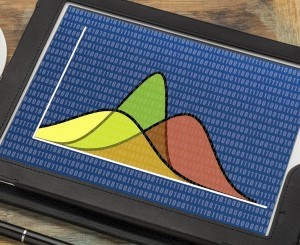Related articles:
- BCAR Revisited: Understanding A.M. Best’s New Model
- Q&A: Don’t React to Rumors on A.M. Best’s New Model, COO Mosher Says
Related Videos:
Although Best had done much of its initial testing on the new model using the metric TVaR, or tail value at risk, that measure “is not easily understood by a lot companies,” according to Thomas Mount, a vice president in Best’s Criteria Research and Analytics group. In addition, a lot of carrier feedback indicated that the TVaR metric “is difficult for companies to manage down,” he said during a webinar update last Thursday, explaining the decision to use an alternative VaR, value at risk, measure.
The webinar was the second in a series that the rating agency is hosting to provide transparency into its thinking behind a planned move to a “stochastic BCAR”—a move to incorporate computer simulation results into the calculations of risk charge factors that make up the Best’s Capital Adequacy Ratio.
Risk charges currently relate to investment risk, underwriting losses, reserve deficiencies and other potential issues that diminish a carrier’s financial strength—and that won’t be changing, Mount said. While the structure of the model will remain a familiar one in which risk charges are combined and compared to policyholders surplus (with some adjustments), what will be changing is that the charges will not be simple numerical factors that are used in the current BCAR (15 percent for unaffiliated common stock holdings, for example).
In addition, the charges will not be based on TVaR, a statistical measure from stochastic models, which Best originally thought would provide a level of comfort for its analysts in evaluating tail risks (potentially severe low probability risks).

VaR or value at risk, or probability of ruin, is just one point on a probability curve out in the tail. VaR (95) represents the loss value that will be exceeded with a 5 percent probability.
“Last time we talked a lot about TVaR. It’s a metric that looks at an average of potential scenarios that could happen in the tail of the probability distribution,” said Mount referring to a lengthy discussion of the metric during a prior webinar. ” (See earlier article, “Best’s New Capital Model Still a Work in Progress,” for more details.)
Taking carrier feedback into account since the earlier update, “we looked at the VaR metric, which just looks at individual points in the tail of the probability curve,” he reported. Considering carriers’ concerns about struggles to manage TVaR, “we plan to use this [VaR] metric on all the risk categories. So we’ll have one consistent metric across reserve risk, pricing risk, asset risk, and credit risk,” Mount said last week.
Moving from TVaR to VaR, however, will mean looking at higher and higher confidence levels to address Best’s concerns about the amount to risk in the tail, Mount said. “Whereas before we were looking at TVaR at lower confidence levels like 92 and 95, the way we can address those tail issues is to just look at higher confidence levels with the VaR metric. So, 98, 99, 99.5 and higher,” he said.
(TVaR (95), for example, captures all events occurring with a 5 percent probability or less. VaR or value at risk, or probability of ruin, is just one point on a probability curve out in the tail. VaR (98) represents the loss value that will be exceeded with a 2 percent probability.)
“We have not [yet] looked at which of those confidence levels will support individual rating categories,” Mount reported. “Even if we do assign guidelines, it is just that: a guideline,” he said. “It’s not directly tied to any individual rating outcome,” he said.
 In a similar vein, during opening remarks for both webinars, Mount stressed that the BCAR component of a rating—and, in fact, the entire assessment of balance sheet strength—is just one part of an insurer rating process that also looks at operating performance, business profile (geographic spread, lines of business distribution) and enterprise risk management.
In a similar vein, during opening remarks for both webinars, Mount stressed that the BCAR component of a rating—and, in fact, the entire assessment of balance sheet strength—is just one part of an insurer rating process that also looks at operating performance, business profile (geographic spread, lines of business distribution) and enterprise risk management.
“BCAR is not the rating. It is certainly one of the starting points of the rating process [but] it is an analytical tool—just one indicator of balance sheet strength, he said.
While Best strives to maintain the current structure that carriers are used to, “you will be seeing different confidence levels” going forward. “So instead of seeing one BCAR score, you will be seeing a BCAR score at each of five different confidence levels that we do eventually select,” Mount told webinar listeners.
“The goal is not to change the structure of the model but to come up with an alternative method of calculating the risk factors that are used. These would come from stochastic simulations from the probability curves.”
Beyond the change from TVaR to VaR since the first update, other changes Mount described were tweaks to asset charges—limiting the time horizons for investment defaults and reinsurance recoverability issues to 10 years, and present valuing the amounts to the evaluation date. In other words, if a simulation indicates a default beyond 10 years, the model does not count that, Mount said, adding that these changes will have little impact on P/C insurers. “Since for most P/C companies most of recoverables are collected within 10 years, this won’t be much of an improvement in terms of simulated default dollars and risk factors.”
Most bonds held by P/C insurers mature within 10 years as well, he said.
Individually, however, capital factors will be higher for bonds and equities as Best moves to the new model. Still there should be “no material impact on most P/C BCAR scores” overall, Mount said. In isolated cases, “there could be an issue with companies which are out of line with industry averages”—those that hold excessive amount of equities in their mix of assets, for example, he said.
In fact, he displayed a slide which showed bond charges jumping significantly –from 4.5 percent under the current BCAR model for NAIC Class 4 bonds, for example, to a range of 23.3 percent at VaR 98 to 27.8 percent at VaR 99.9 under the new model. And the charge for investments in publicly traded common stocks will soar from 15 percent under the current model to 33.9 percent at VaR 98 or 48.3 percent at VaR 99.9.
Tests completed using 2013 data have revealed few issues even with the increased charges, according to Mount and co-panelist Matthew Mosher, senior vice president for A.M. Best Rating Services.
“We looked back at 2013 across every rating and backed out the charges for bonds and publicly traded stocks and replaced them with 5 percent for bonds and 50 percent for publicly traded stocks”—levels that are higher than the indicated VaR 99.9 levels of 3.1 percent for bonds (averaged across all bond classes) and 48.3 percent for stocks. “We saw very little cause for concern, Mosher said. Issues that did surface, he said, were those that “we were aware of already and were reflected in the rating already.”
The bond holdings of most P/C companies are in government and high-grade categories, Mount also noted.
Observations with respect to underwriting and other charges were similar to those that the two analysts shared during the first webinar—auto insurance underwriting risk charges, for example, are coming out lower under the new model while commercial liability lines are slightly higher.
At one point, when discussing catastrophe risk charges, Mount suggested but did not explicitly state that some carriers might end up buying more reinsurance to maintain high ratings, as the VaR at higher confidence levels will highlights points where catastrophes blow through reinsurance coverage limits.
“The new model, by going out to higher confidence levels, will highlight companies that have limited tail coverage,” he said. “Those companies that only buy to the 1-in-100 [year level], this model will now show that by looking at these different confidence levels. We will be able to see where that coverage runs out and then make an assessment of whether they have adequate reinsurance for those tail events.”
“Higher-rated companies are expected to have more tail coverage, i.e., they are expected to have strong BCAR scores going out farther into the tail,” he said.
Discussing overall considerations, Mount said BCAR guidelines—essentially, mapping BCAR scores to rating levels—have not yet been determined. “We are still looking at the issue of which confidence levels line up in general with different rating levels,” he said. That is in keeping with comments Mount and Mosher made during the first webinar suggesting that Best is striving to set the guidelines so that most ratings will not be impacted by the model change.
Presenting the timeline of events leading up to the second-quarter 2016 rollout of the model for P/C insurers, Mosher said A.M. Best is currently testing the new BCAR model using 2014 data and keeping an eye out for unintended consequences. After that, the rating agency intends to share 2014 output with companies as draft criteria are released, and there will be a lengthy comment period, he said. A second update might be needed depending on the extent of the comments, he said.
Subsequent webinar updates are planned as well. “We want to make sure we’re not out there with a giant surprise when we put out the draft criteria,” Mosher said.
(For more details of charge calculations and timing considerations, see Carrier Management’s summary of the prior webinar in an article titled, “Best’s New Capital Model Still a Work in Progress.”)





















 Better Results Ahead? Technology Improvements in Commercial Fleets
Better Results Ahead? Technology Improvements in Commercial Fleets  Insuring ‘Red Zone’ High-Value Homes
Insuring ‘Red Zone’ High-Value Homes  The Insurance Industry’s Talent Crunch: Attracting and Retaining Gen Z
The Insurance Industry’s Talent Crunch: Attracting and Retaining Gen Z  Revisiting California’s Wildfires: A Personal Journey
Revisiting California’s Wildfires: A Personal Journey 













